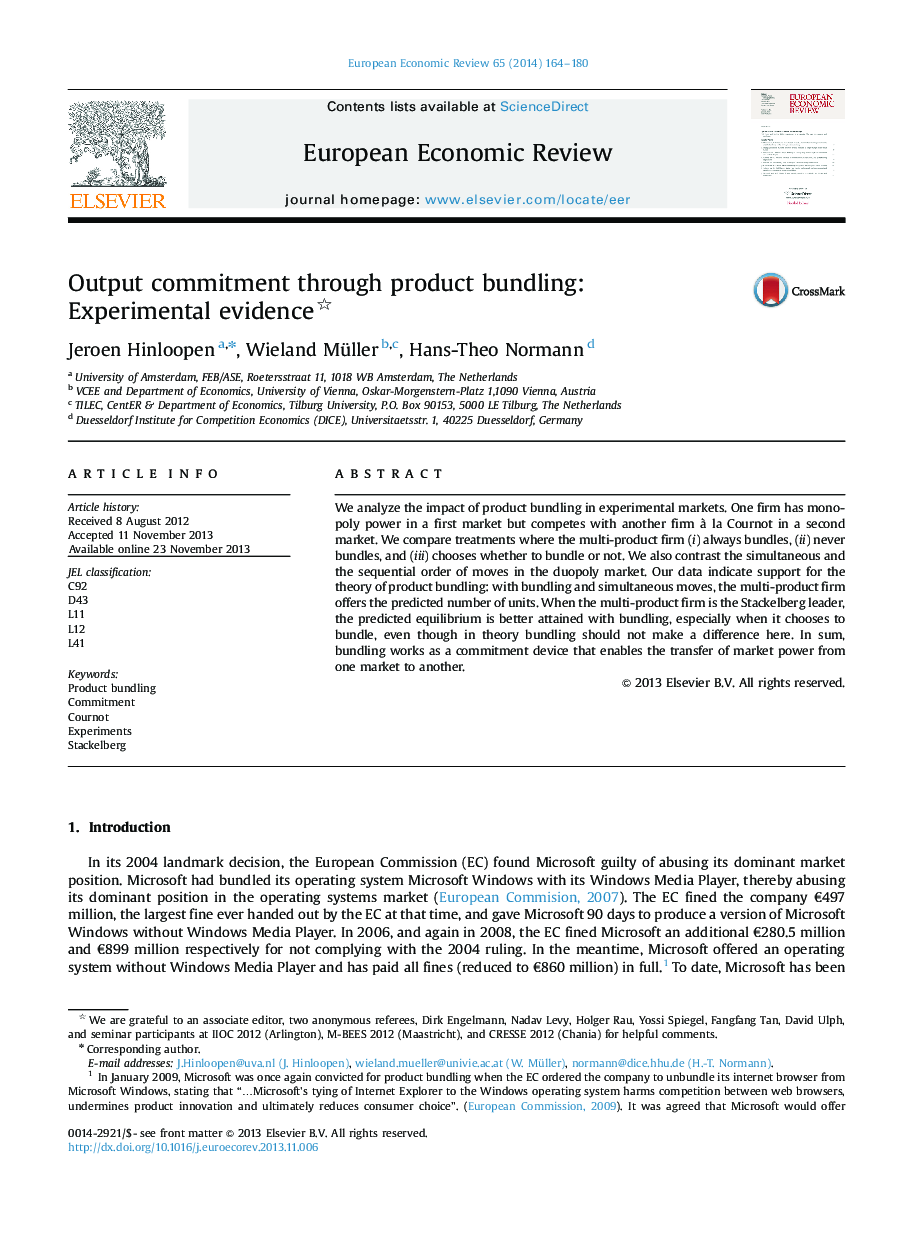| Article ID | Journal | Published Year | Pages | File Type |
|---|---|---|---|---|
| 5066851 | European Economic Review | 2014 | 17 Pages |
â¢Asymmetric Cournot equilibria are observed in the lab, irrespective of whether the multi-product firm bundles or not.â¢The Stackelberg equilibrium absent bundling is not observed in the lab, in line with previous studies.â¢The Stackelberg equilibrium with bundling is much better attained in the lab, especially if bundling is endogenously chosen.â¢Product bundling works as a commitment device that enables the transfer of market power from one market to another.â¢Product bundling has a strong exclusionary effect; it reduces significantly the profits of the single-product firm.
We analyze the impact of product bundling in experimental markets. One firm has monopoly power in a first market but competes with another firm à la Cournot in a second market. We compare treatments where the multi-product firm (i) always bundles, (ii) never bundles, and (iii) chooses whether to bundle or not. We also contrast the simultaneous and the sequential order of moves in the duopoly market. Our data indicate support for the theory of product bundling: with bundling and simultaneous moves, the multi-product firm offers the predicted number of units. When the multi-product firm is the Stackelberg leader, the predicted equilibrium is better attained with bundling, especially when it chooses to bundle, even though in theory bundling should not make a difference here. In sum, bundling works as a commitment device that enables the transfer of market power from one market to another.
